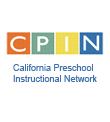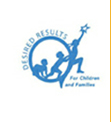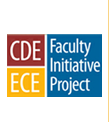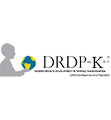Home | Additional Resources | Glossary
Glossary
academic English: The variety of English used in schools, textbooks, and many business and government transactions. |
American Sign Language: A complex visual-spatial language used by the deaf community in the United States and in English-speaking parts of Canada. There are also other systems of signed communication, such as Signed English. Children from other countries may have learned their own regional variation of a signed language. |
augmentative communication: Any method of communicating without speech, such as the use of signs, gestures, and electronic and non-electronic devices. |
bilingual: A person [child or adult] who speaks two languages. |
biliteracy: Having the knowledge and skill to read and write in one's home language and in a second language. |
cerebral palsy: A disorder of posture, muscle tone, and movement resulting from brain damage. |
| code switching: The practice of using more than one language to express a thought or idea. |
cognate: One of two or more words having the same linguistic root or origin. |
content knowledge: The concepts, principles, relationships, processes, and applications of an academic subject that children should know. The developmental age and grade level of a child should determine the extent of the knowledge expected. |
cross-language transfer: The skills, background knowledge, and cognitive strategies that children transfer between the first and second language. |
culture: Values, ideas, and other meaningful symbolic systems created and transmitted by a group of people. |
decoding: The ability to decode the text is grounded in the understanding of the mechanics of text (concepts about print), the knowledge that spoken words consist of a sequence of individual sounds or phonemes (phonemic awareness), a familiarity with the letters in the language (letter knowledge), the knowledge that the letters in the written words represent corresponding sounds (alphabetic principle), and the ability to bring these elements together to decipher regular words. |
Down syndrome: A common genetic disorder in which a child is born with forty-seven rather than forty-six chromosomes, resulting in developmental delays, mental retardation, low muscle tone, and other possible effects. |
dual-language development: The development of two languages; same as bilingual-language development. |
early literacy: The knowledge and skills that are the forerunners to later success in reading and writing. |
emergent readers: Children who have some early literacy skills but are not yet fluent readers. |
English learner: The term currently used to describe children attending school in the United States who come from homes where a language other than English is spoken. |
expressive language: The process of formulating and sending a message is called expressive language. One way to express language is through speech. Other ways are through sign language, pointing to words and pictures on a communication board, or formulating written messages on a computer screen. |
formulaic speech: Speech characterized by formulas or chunks and phrases that the child uses without completely understanding how they function in the language. |
grammar: The system of rules by which words are formed and put together to make sentences. |
home language: The language that is used primarily by the child's family in the home environment. For some children, there may be more than one home language (e.g., when the mother speaks Chinese and the father speaks English). |
hypothesis: A tentative explanation for a phenomenon used as a basis for further investigation. |
hypothesize: To offer something as a form of hypothesis. |
immigrant experience: An individual's or family's experience of leaving one's home country and moving to a new country. |
indigenous: Having origins in a region or a country. |
Individualized Education Program (IEP): A written plan constituting a legal document that states a child’s present level of functioning; specific areas that need special services; annual goals; short-term objectives; services to be provided; and the method of evaluation to be implemented for children three to twenty-one years of age who have been determined eligible for special education (Cook, Klein, and Tessier 2004). |
Individualized Family Service Plan (IFSP): The IFSP is both a process and a document. The IFSP process consists of the gathering, sharing, and exchange of information between families and staff to enable families to make informed choices about the early intervention services they want for their children. The IFSP document is a written contract that outlines outcome statements to be achieved by the infant or toddler with special needs and his/her family (Cook, Klein, & Tessier, 2004). |
language acquisition: The process of learning a language. From birth through age five, children subconsciously acquire the basics of their home language (phonology, morphology, syntax, pragmatics) assuming the absence of a disability and access to human language input. From ages six and continuing throughout adulthood, individuals continue this subconscious learning adding layers of complexity to what they already know. Each grade level of formal school instruction adds to the cognitive complexity of spoken and written language development. |
language brokers: A term used to describe children who use their developing bilingual language skills to act as translators between institutions and their family members and to assist their peers or siblings who may not know as much English as they do. |
language loss: Language loss occurs when a minority group member cannot do the things with the minority language that he or she used to be able to do; or when some of the proficiency is no longer accessible. Language loss may also refer to incomplete or imperfect learning of a language spoken in childhood. |
language: The human use of spoken or written words as a communication system. Language can also include a system of communication based on signs, gestures, or inarticulate sounds. |
meta-linguistic awareness: An awareness of the structure and function of language that allows one to reflect and consciously manipulate the language. |
monolingual: Refers to a person (child or adult) who speaks one language. |
morphology: The study of meaningful units of language and how they are combined to form words. |
motherese: The name given to the restricted sort of language spoken by mothers and other primary caregivers to their young children, the main function of which is to teach the child the basic function and structure of language. Adults make an unconscious effort to stretch the signals, exaggerate the acoustic components that are exactly the dimensions that the baby needs to pay attention to in order to form the mental maps for speech. |
multilingual: Refers to a person (child or adult) who speaks more than one language. |
overgeneralization: A language practice used by children as they are learning a language in which they apply a perceived rule or use of a word incorrectly. For example, a child may say “mans” instead of “men” to show the plural form of the word “man”. |
phonemic awareness: The ability to hear, identify, and manipulate the sequence of individual sounds (phonemes) in spoken words. |
phonics: The understanding that there is a predictable relationship between phonemes (the sounds of spoken language) and graphemes (the letters and spellings that represent those sounds in written language). |
phonological awareness: The ability to detect or manipulate the sound structure of spoken words, independent of meaning. It is an increasingly sophisticated capability that is highly predictive of a child’s later ability to read. |
phonology: The system or pattern of speech sounds used in a particular language. |
pragmatic/communicative competence: The ability to understand and apply social rules for language use. Children who are skilled at pragmatic use or who have communicative competence can use language to persuade peers and adults, ask and answer questions in school, and request entry into a playgroup. |
private speech: The practice of children talking aloud to themselves while engaged in play. |
read alouds: An adult’s reading of a book to a child or group of children. A read-aloud includes back-and-forth talking about the story. If a book has a patterned (predictable) text, children enjoy “reading” along with the adult after the book has been read a few times. |
receptive language: The process of receiving and understanding a message through language is called receptive language. |
register: Language register refers to different forms of the same language that are used with certain people or in certain situations. |
scaffolding: A process by which adults or more able peers provide supportive structures to help children learn and play. Scaffolding occurs at a time when children are faced with a challenge that they can solve with a simple hint, question, or prompt. |
script: The way a language is represented in writing. For example, Armenian script looks like this: _______. Chinese script looks like this: _____. Arabic script looks like this: _____. English script is represented in the writing in this guide. |
second-language acquisition: The process by which a child or an adult learns to understand and use a second language. |
semantics: The study of how meaning in language is created by the use and interrelationship of words, phrases, and sentences. |
simultaneous language acquisition, simultaneous bilingualism: The process of learning two languages at the same time. |
social English: The variety of English initially used by most speakers learning English as a second language in informal situations and conversations. |
sociocultural perspective: Based on the work of Vygotsky (1978), sociocultural theory presents the perspective that children's cognitive structures are developed through the actions and speech of their caretakers and are transmitted through social interactions. It follows then that there will be culturally coded styles of speech and interaction, which will result in culturally related patterns of thought. |
successive language acquisition, successive bilingualism: The process of learning a second language after the first language has already been learned or after basic mastery in that first language has been achieved. |
syntax: The ordering of and relationship between the words and other structural elements in phrases and sentences. |
take the floor: The act of calling attention to oneself to participate or show one’s knowledge; being the main speaker in a group. |
telegraphic speech: Speech characterized by the use of a few content words without functional words or certain grammatical markers, as in telegraphs. |
vocabulary: All the words used by or known by a child or adult. Oral vocabulary refers to words used in speaking or recognized in listening. Reading vocabulary refers to words recognized or used in print. |
wait time: The amount of time a teacher allows for children to respond to a question or request. |





